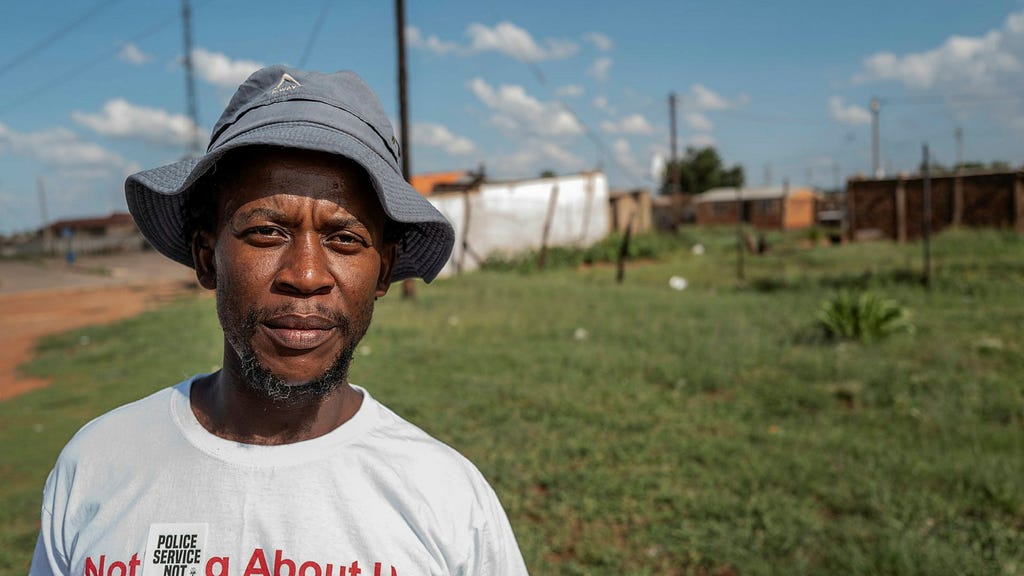A 40-year-old father of five, Aubrey (a pseudonym used for legal reasons), dreamed of providing for his family. He longed to buy his children school uniforms, afford their bus fare, and become a proud provider. This desperation led him to accept an offer to work in one of the world’s largest abandoned gold mines in Stilfontein, South Africa. He knew the risks, but the potential rewards, witnessed in the transformed lives of other illegal miners who returned with gold, outweighed his fears. He had seen others buy houses, cars, and start businesses – a life of ease he craved for his own family. Aubrey’s current existence was a stark contrast, relying on temporary jobs since losing his position in land restoration after the mine’s closure in 2015.
In the predawn hours of July 31st, Aubrey descended into the 2,000-meter-deep abandoned shaft. Equipped with only a headlamp, he felt a surge of fear, wondering if anyone would be there to receive him. To his relief, he found hundreds of others, a testament to the scale of illegal mining in the area. He was assigned a mentor who guided him through the intricacies of the mine: where to safely mine, the location of potable water sources, and even which acidic water, though unsafe to drink, could be used for washing. Like the other ”zama zamas” (Zulu for ”hustlers” or ”those who try their luck”), Aubrey would purchase equipment, food, and other necessities from organizers, paying with a portion of the gold extracted from the 20-centimeter-thick vein that stretches 250 kilometers underground, a source of unimaginable wealth that has yielded nearly 40% of all gold in history. Aubrey marveled at the abundance of gold still present, questioning the rationale behind the mine’s closure.
South Africa still holds 40% of the world’s known gold reserves. However, the remaining gold lies so deep that extraction costs are double those in other parts of the world, rendering many South African mines unprofitable. While South Africa once dominated the global gold market, producing 70% in the 1970s, its market share has dwindled to a few percent. The mine outside Stilfontein, abandoned due to these prohibitive costs, still holds over 300 tons of gold, worth over 250 billion kronor at current prices. This vast, untapped wealth lies dormant beneath the surface, a constant temptation for those struggling to survive. The landscape surrounding Stilfontein bears the scars of large-scale mining: slag heaps erode under the elements, and decaying infrastructure stands as a silent testament to the boom and bust cycle of the gold industry.
Unbeknownst to Aubrey and the other zama zamas, the police were planning a large-scale operation to curb illegal mining activities. In mid-August, police initiated a blockade, cutting off the supply of necessities to the miners trapped underground, hoping to force them to surface. What Aubrey initially believed to be a short-term disruption turned into a life-or-death struggle. As weeks turned into months, food became scarce. The miners faced a terrifying dilemma: remain underground and risk starvation, or attempt to ascend and face arrest and deportation. The majority of the zama zamas were foreign nationals from neighboring countries like Mozambique, Lesotho, and Zimbabwe, adding another layer of complexity to their precarious situation. Police claimed the miners refused to come up, fearing arrest. However, from Aubrey’s perspective, the police tactic of kicking rocks down the shaft created another deadly hazard, discouraging the miners from attempting an ascent. These rocks, accelerating to ten times their initial velocity during their two-kilometer fall, posed a lethal threat to anyone below.
As conditions worsened, an alternative escape route, a two-kilometer trek through a labyrinthine network of abandoned shafts, presented itself. This route demanded perilous climbs, including ascending hundred-meter vertical drops using rope ladders. A single misstep meant certain death. By December, driven by desperation to see his family for Christmas and the increasing number of deaths from starvation in the mine, Aubrey made the agonizing decision to attempt the climb. He and a group of 15 men embarked on the perilous journey. One of them lost his grip and fell to his death. Aubrey himself endured bleeding fingers but persevered, finally emerging on Christmas Day, not with gold, but with his life. He had witnessed unimaginable horrors during his time underground, including cannibalism born out of desperation. He had eaten cockroaches to survive and seen a friend contemplate suicide to escape the slow agony of starvation.
Emerging from the mine, Aubrey was met not with the embrace of his family, but with the cold steel of police weapons. After a medical check, he was taken to the police station, where he finally saw his wife during his bail hearing. Now facing charges of illegal mining and trespassing, he lives with the trauma of his ordeal, trying to maintain a semblance of normalcy for his children. He shields them from the horrors he witnessed, striving to be the father he was before his descent into the mine. The experience has indelibly marked him. He vows never to return to the darkness below, a place he now recognizes as “hell on earth.” The scars on his fingers serve as a constant reminder of the price he paid for his desperate gamble and the unimaginable horrors witnessed in the pursuit of a better life.














